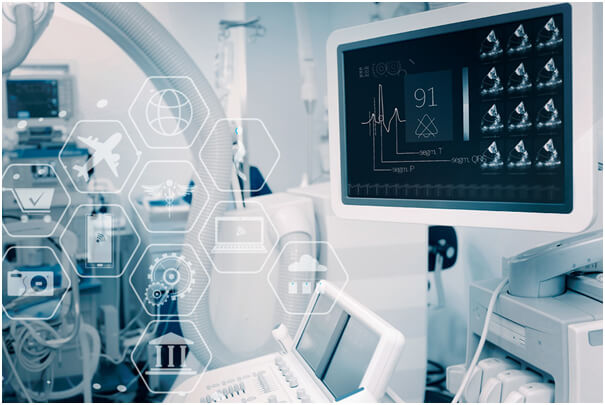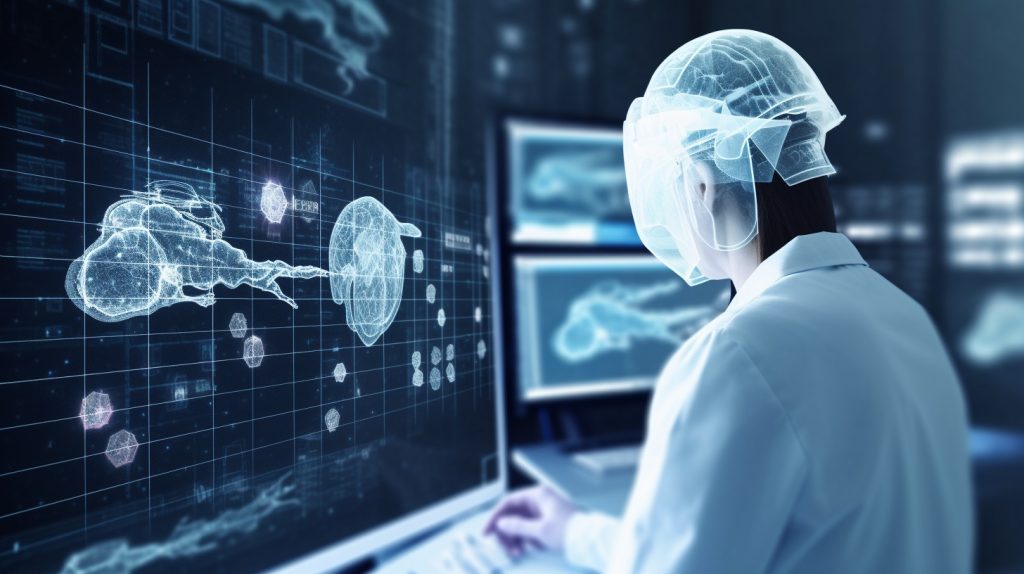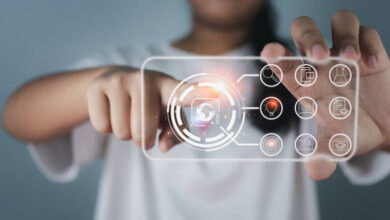how IoT is used in Healthcare( A Complete Guide 2024)
Revolutionizing Healthcare: The Impact of IoT

Revolutionizing Healthcare: The Impact of IoT
how IoT is used in Healthcare: The healthcare industry has been undergoing a significant transformation, thanks to the integration of cutting-edge technology. The Internet of Things (IoT) has emerged as a revolutionary force, enhancing patient care, improving operational efficiency, and facilitating medical research.

In this article, we will explore the multifaceted ways in which IoT is being used in healthcare to deliver a more connected, efficient, and patient-centric experience. EnoughInfo.net
IoT in Healthcare: A Paradigm Shift
1. Remote Patient Monitoring
IoT devices have paved the way for remote patient monitoring, allowing healthcare providers to keep a watchful eye on patients’ vital signs and conditions from a distance. Wearable devices like smartwatches and health trackers can monitor heart rate, blood pressure, glucose levels, and more, transmitting real-time data to healthcare professionals. This has been a game-changer for the management of chronic diseases, such as diabetes and hypertension. How IoT is used in Blockchain and IoT Security(A powerful Guide2024)
2. Telemedicine and Telehealth
The integration of IoT in telemedicine enables healthcare professionals to conduct virtual consultations, diagnose patients, and monitor their progress remotely. Video conferencing, mobile health apps, and connected medical devices make it easier for patients to access healthcare services without leaving their homes, a particularly crucial development during the COVID-19 pandemic. How IoT is used in Environmental Monitoring: (Complete Guide 2024)
3. Hospital Operations and Efficiency
IoT is optimizing hospital operations by improving the tracking and management of medical equipment and resources. Smart beds, for instance, can monitor patient movement, reducing the risk of bedsores and facilitating timely care. IoT also helps manage inventory, ensuring that critical supplies and medications are always available.
4. Medication Adherence
Non-adherence to prescribed medications is a significant challenge in healthcare. IoT-enabled pill dispensers can remind patients to take their medications at the right time and can alert healthcare providers if a dose is missed. This not only improves patient outcomes but also reduces the burden on healthcare systems.
5. IoT in Surgery and Imaging
IoT plays a crucial role in surgery and medical imaging. Surgeons can use augmented reality (AR) glasses and IoT technology to access patient data and guidance during procedures. Advanced imaging devices equipped with IoT sensors provide more precise diagnostics and reduce the risk of errors.
6. Medical Research and Drug Development
IoT accelerates medical research by collecting data from a vast number of patients and devices. This data can be used to identify trends, track disease outbreaks, and develop innovative treatments. IoT-connected devices also play a significant role in clinical trials and the development of new pharmaceuticals.
Challenges and Considerations
While IoT is transforming healthcare, there are several challenges to address:
- Data Security and Privacy: Protecting patient data and ensuring privacy is a top priority. IoT devices must adhere to strict security standards to safeguard sensitive medical information.
- Interoperability: Ensuring that different IoT devices and systems can communicate effectively is essential. Interoperability standards are required for seamless integration.
- Regulatory Compliance: IoT devices in healthcare are subject to various regulations, including HIPAA in the United States. Compliance with these regulations is essential to avoid legal and privacy issues.
- Data Overload: The vast amount of data generated by IoT devices can be overwhelming. Healthcare systems need efficient data management and analysis solutions.
In conclusion,
how IoT is used in Healthcare: IoT is revolutionizing the healthcare industry, ushering in an era of patient-centric care, remote monitoring, and operational efficiency.
As technology continues to advance, the potential for IoT in healthcare is limitless, promising better patient outcomes, more accessible healthcare services, and the acceleration of medical research. With careful attention to security and regulatory compliance, the marriage of IoT and healthcare is set to drive the industry toward a brighter, more connected future.https://enoughinfo.com/how-to-message-recruiters-on-linkedin-all-you-need-to-know/








